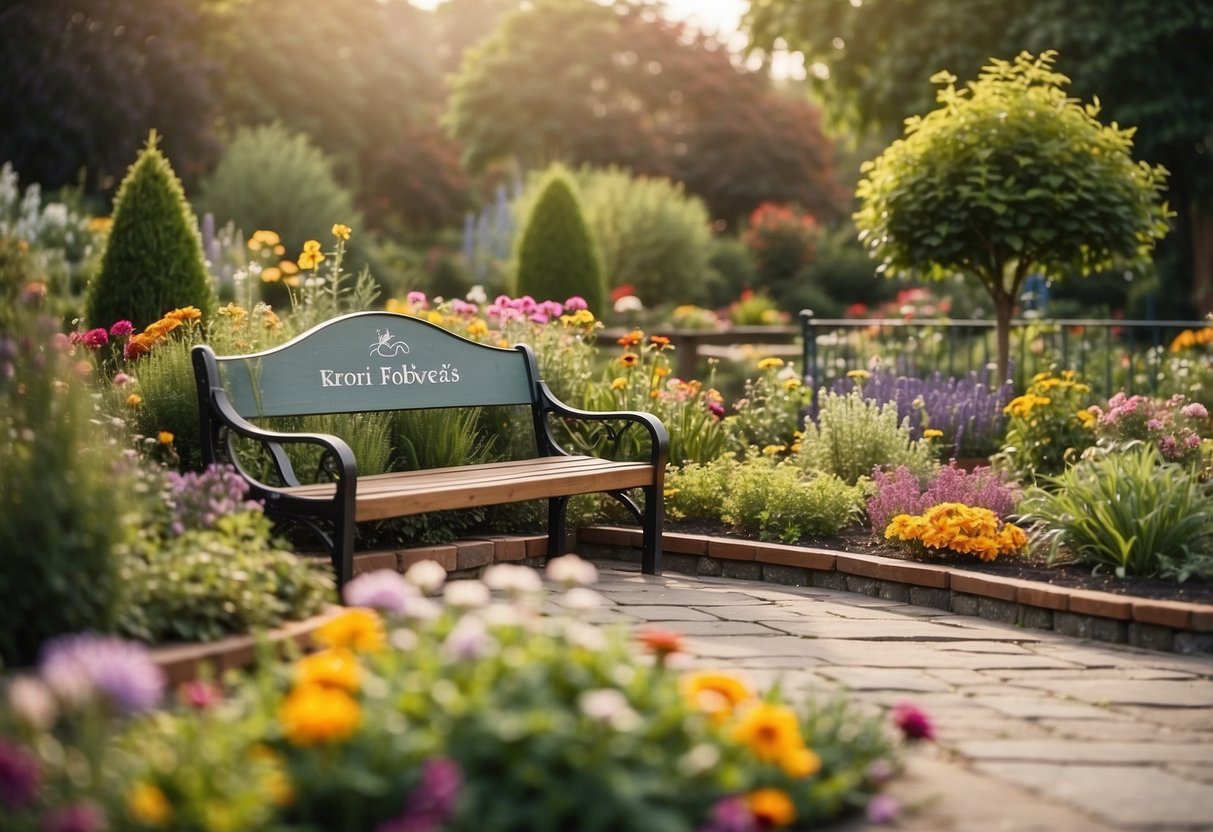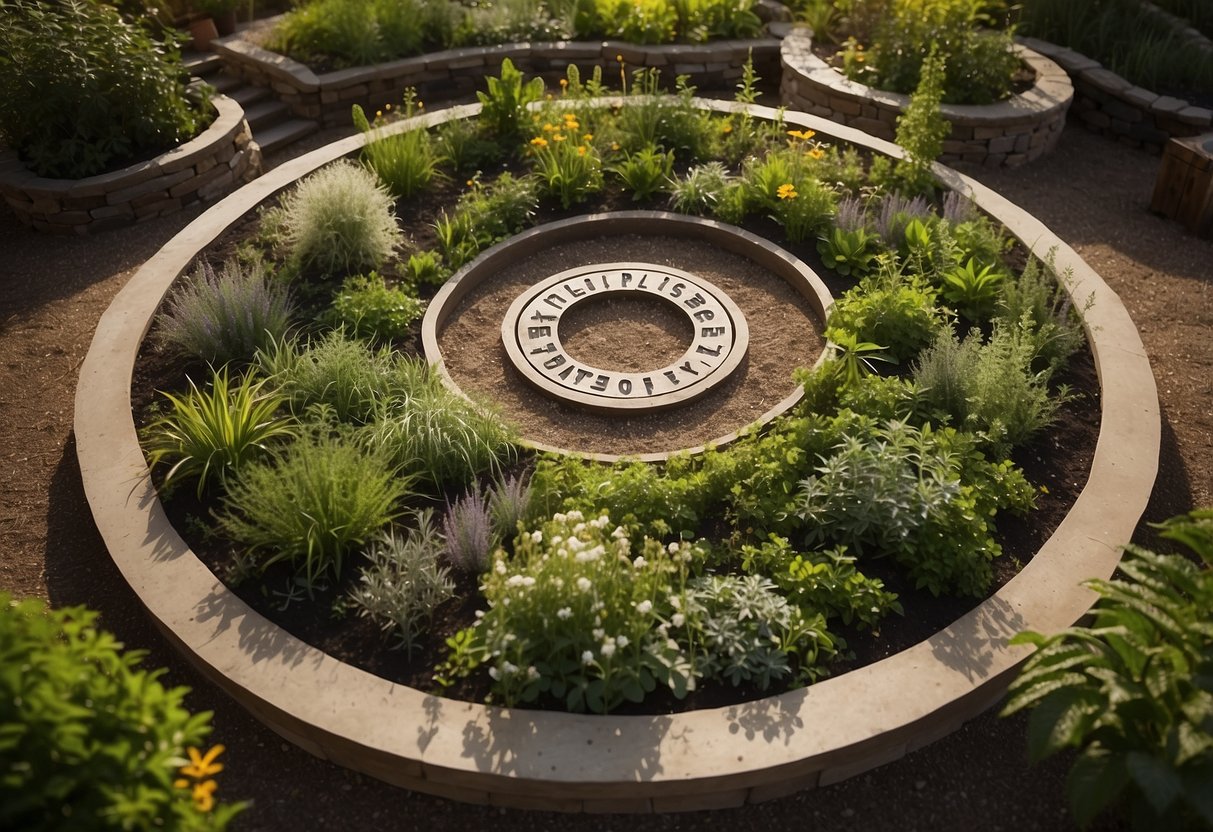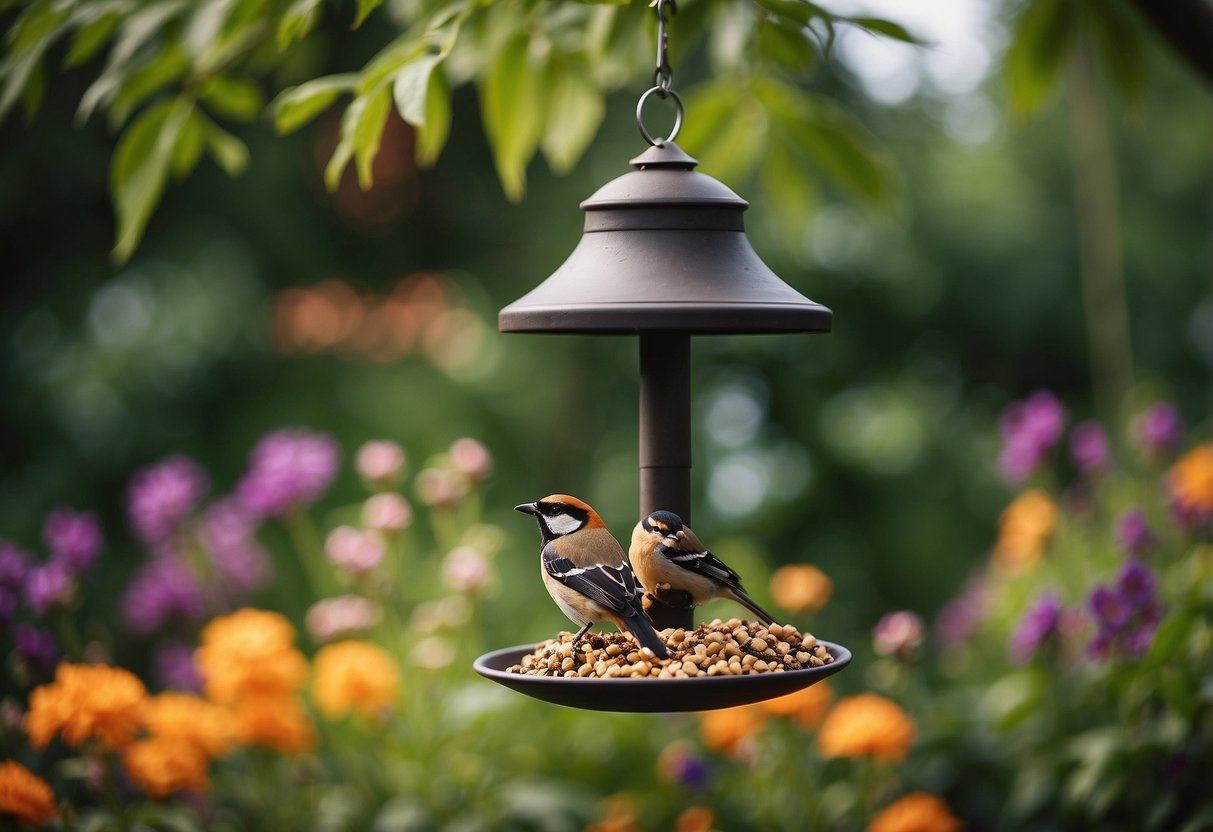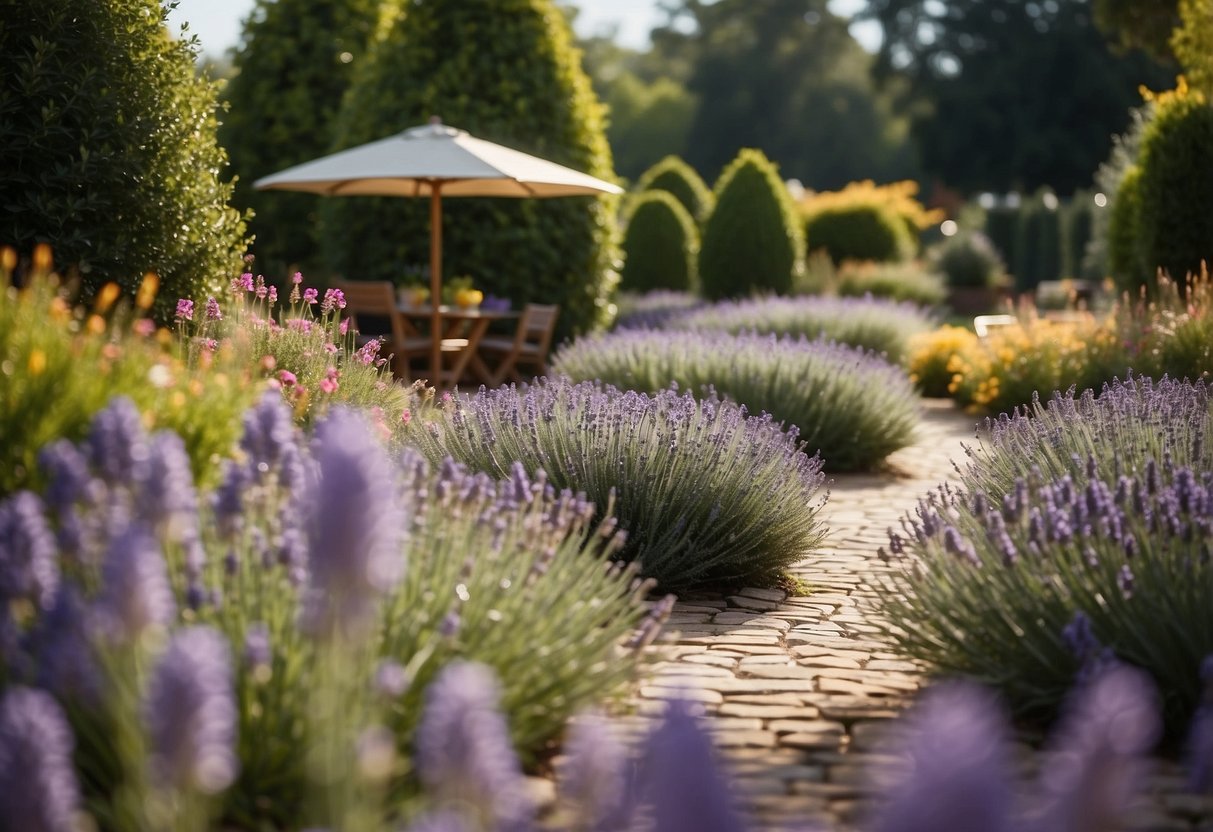Garden Ideas for Dementia: Creating a Calming Outdoor Space
Creating a garden for someone with dementia can be a rewarding and therapeutic experience. It offers countless benefits, from reducing stress to improving mood and cognitive function. By carefully selecting plants and design elements, you can craft a space that is both safe and stimulating.

You don’t need to be an expert gardener to make a meaningful difference. Simple changes can greatly enhance the quality of life for your loved one. Think about the sights, smells, and sounds that bring joy and comfort, and how you can incorporate these elements into your garden.
1) Memory Garden

A memory garden can be a wonderful space for someone with dementia. It combines familiar sights, smells, and sounds to help trigger memories and provide comfort.
You can include plants that have significant meaning or are associated with happy memories. Roses, lavender, and herbs are great choices.
Add a few comfortable seating areas. These spots can serve as places for rest and reflection.
Walkways should be clear and easy to navigate. Raised beds can make gardening easier and more accessible.
2) Sensory Pathway

Creating a sensory pathway in your garden can greatly benefit those with dementia.
Include different surfaces like pebbles, bark, and smooth stones to stimulate touch. Adding water features can also enhance the tactile experience as water flows over hands.
Wind chimes, rustling plants, and bird feeders can add gentle, soothing sounds throughout the pathway, making it more engaging and relaxing.
Incorporate safe, edible plants such as herbs and berries. These can stimulate the sense of taste and provide a rewarding experience.
Sitting areas along the path can offer places to rest and enjoy the surroundings.
3) Raised Beds for Easy Access

Raised garden beds make gardening easier for those with dementia. They allow you to garden while standing or sitting, reducing the need to bend down.
Ensure the bed is at a comfortable height. This can be around two feet high. A good example is the Solid, Simple Elevated Raised Garden Bed from Kreg Tools.
Wheelchair access is important too. Make sure there is plenty of space around the bed. A bed width of at least 22 inches is recommended. Check out more wheelchair-friendly tips from Graying with Grace.
4) Herb Spiral

An herb spiral is a wonderful addition to a garden designed for dementia. It provides easy access to a variety of herbs in a compact space. You can build it using stones, bricks, and soil.
The spiral shape creates microclimates, which means you can grow different herbs that prefer various conditions. Rosemary, oregano, and thyme do well in sunny, dry areas. Towards the bottom, you can plant parsley and cilantro, which enjoy more shade and moisture. Learn more about building an herb spiral at Family Food Garden.
This simple garden feature can stimulate senses with its colors and fragrances, helping to create a calming and engaging environment.
5) Bird Feeder Station

A bird feeder station can be a wonderful addition to a garden designed for people with dementia. Watching birds come and go can be very calming and can help bring back memories.
You can use a simple bird feeder, filled with seeds like sunflower seeds or cracked corn, to attract various types of birds. Try placing the feeder near a window so it can be easily seen.
Adding a birdbath and flower pots can make the area more inviting. This setup will create a pleasant spot for anyone to enjoy.
6) Water Feature

Adding a water feature to your dementia garden can be a wonderful idea. Water has a calming effect and can help reduce stress.
Consider adding a small fountain or a birdbath. The sound of flowing water can be soothing and refreshing. It’s also a great way to attract birds and other wildlife to your garden.
When choosing a water feature, make sure it’s safe and accessible. You want it to be easy to maintain and enjoy.
7) Colorful Annuals

Adding colorful annuals to your garden can bring cheer and a sense of joy. These flowers bloom for one season, offering bursts of vibrant colors.
Marigolds, petunias, and zinnias are great choices. They are easy to grow and maintain. Their bright colors can capture attention and provide a lively atmosphere.
Planting these flowers in raised beds or containers makes them more accessible. This way, your loved one can enjoy their beauty up close.
8) Scented Plants

Scented plants can be a wonderful addition to a garden designed for people with dementia. They offer a variety of benefits, such as stimulating the senses and evoking memories.
Lavender is a popular choice for its calming and soothing fragrance. You can also consider rosemary, which has a strong, distinctive scent that many people find comforting.
Other great options include jasmine, thyme, and mint. These plants are easy to grow and maintain, providing a pleasant aroma all year round.
9) Tactile Vegetables

You can add tactile vegetables to your sensory garden to create hands-on experiences. Vegetables like beans, peas, and cherry tomatoes are great for this.
Touching the fuzzy leaves of zucchini or the bumpy skin of cucumbers can be interesting and engaging.
Planting these vegetables can help those with dementia connect with nature in a meaningful way. Additionally, the textures of different vegetables create diverse sensory stimuli.
10) Garden Seating Areas

Having comfortable seating in your dementia-friendly garden is very important. Seats placed next to a soothing water feature or under a shade can create a peaceful spot.
Include several seating options. A comfy bench, a few chairs, or even a swing can provide cozy places to sit and relax. Your loved ones can rest and enjoy the beautiful surroundings.
The Importance of Gardens for Dementia Patients

Gardens provide both mental and physical benefits for dementia patients. From reducing anxiety to encouraging physical activity, these green spaces are essential in improving the quality of life for those with dementia.
Mental Health Benefits
Gardens can greatly improve the mental health of dementia patients. The colorful flowers and fragrant herbs create a calming atmosphere that can help reduce anxiety and agitation. Walking on soft paths and touching textured plants provide sensory stimulation, which can evoke positive memories and assist with emotional regulation.
Additionally, engaging with nature can alleviate depression and boost mood. The familiarity of garden elements like picnic tables or flowerbeds can provide a sense of security and joy. Spending time in such environments can make individuals feel more relaxed and connected.
Physical Wellbeing
Gardening encourages physical activity, which is crucial for dementia patients. Activities like planting flowers, watering plants, and walking through the garden can improve motor skills and help maintain mobility. These activities can be adapted to varying physical abilities, ensuring inclusivity for all patients.
Gardens often feature raised beds and wide paths, making them accessible for those with mobility challenges. The simple act of being outdoors can enhance overall health, offering benefits such as fresh air, sunshine, and a natural boost in Vitamin D levels. This contributes to a healthier, more active lifestyle.
Using dementia-friendly gardens for both mental and physical stimulation creates a holistic approach to care, enriching the lives of those affected by this condition.
Designing a Dementia-Friendly Garden

In a dementia-friendly garden, you need to focus on creating safe pathways, incorporating sensory features, and using color contrast to help guide and comfort those with dementia.
Safe Pathways
To ensure the garden is safe, pathways should be smooth and non-slip. Uneven or slippery surfaces can be dangerous, so it’s best to avoid them. Use flat stones or bricks, and check regularly for any damages.
Wide paths are important to accommodate wheelchairs and walkers. Adding handrails along the paths can provide extra support for those who need it. Make sure there are plenty of resting spots with benches or chairs so people can take breaks often.
Clear signposting is crucial. Use large, easy-to-read signs to guide people along the paths. Ensure the pathways are well-lit at night to prevent trips or falls.
Sensory Features
Sensory features can help stimulate the senses and bring comfort. Consider adding a variety of textures and scents. Plants like lavender, rosemary, and mint not only smell wonderful but are also easy to touch and identify.
Water features add soothing sounds and can be interactive. Simple fountains or small ponds can create a calming atmosphere. Be sure they’re safe and have no deep areas.
Different textures can be added through various plants and materials. Incorporate smooth, rough, soft, and prickly elements to engage touch. Wind chimes and bird feeders can also add pleasant sounds and sights, encouraging engagement with nature.
Color Contrast
Color contrast is vital in a dementia-friendly garden. Bright and contrasting colors can help guide people and make the garden a more vibrant place. Use bright flowers and plants to create clear boundaries and guide paths.
Different colored flowers or painted elements can help distinguish different areas. This can aid in wayfinding and make the garden feel more organized. Popular choices are sunflowers, marigolds, and poppies, which provide striking colors.
Make sure important features like benches and signs stand out with contrasting colors. This can help in recognizing and remembering different parts of the garden easily.
Engaging Activities in the Garden

Spending time in the garden can be very rewarding for people with dementia. Activities like planting flowers and doing therapeutic workshops can help maintain physical and mental well-being.
Gardening Tasks
Gardening tasks are an excellent way for individuals with dementia to stay active and engaged. Simple activities such as planting seeds, watering plants, and harvesting vegetables can be very satisfying.
Setting up raised garden beds can make it easier for those with limited mobility to participate. Raised beds minimize bending and reaching, making gardening more accessible.
Using familiar plants with recognizable scents and colors can stimulate memories and provide comfort. Encourage the use of easy-to-handle tools, such as lightweight trowels and watering cans, to make tasks more manageable.
You can also create a routine around gardening tasks, which can provide structure and predictability for those with dementia.
Therapeutic Workshops
Therapeutic workshops in the garden can offer additional benefits. These workshops can include activities like creating flower arrangements or making herbal sachets.
Workshops provide sensory stimulation. Handling flowers, smelling herbs, and feeling soil can help improve mood and reduce agitation. Activities like painting garden pots or making bird feeders can also be relaxing and creative.
Consider including group activities. Socializing with others in a garden setting can increase feelings of connectedness and reduce feelings of isolation. You can incorporate music into these workshops for additional sensory benefits.
Overall, therapeutic workshops can help enhance the mental and emotional well-being of people with dementia while providing enjoyable and engaging activities.







